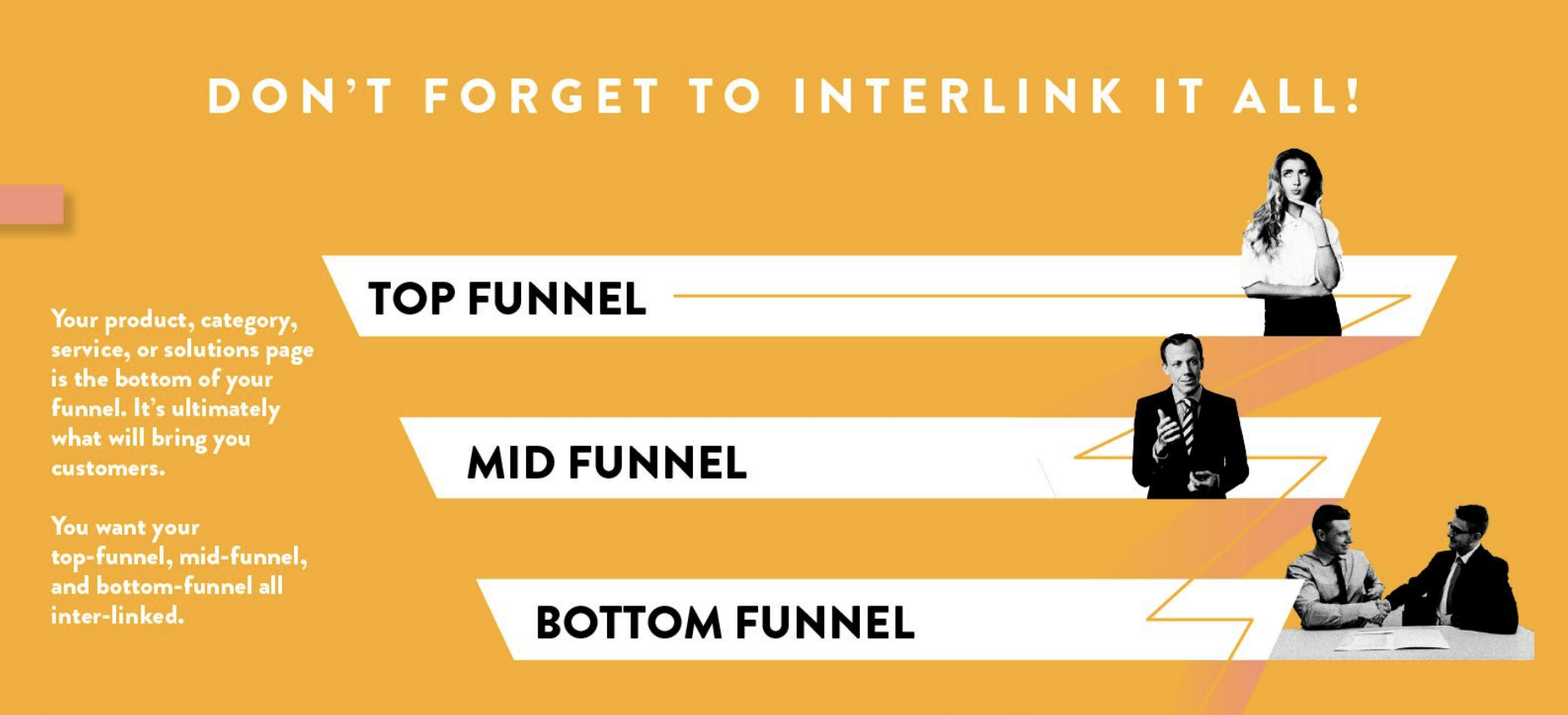Looking to boost rankings of key product pages while also driving secondary KPIs?
Hoping to get your products on the first page of Google?
On June 7, I moderated a webinar with Cory Collins, Nick Katseanes, and Kimberly Brown of Page One Power who showed us a unique, full-funnel approach.
In that webinar, they shared innovative ways to combine link building and content creation for stronger SEO campaigns.
Here’s a summary of the webinar. To access the entire presentation, complete the form.
Steps To Build A Funnel That Drives Product Page Rankings
We all want more revenue from search.
But how do we get it?
The answer is through product keywords and qualified traffic.
Here’s the step-by-step process:
Step 1: Find Existing Link Opportunities
If you want to leverage the power of search, you’ll need to influence your category pages via link building.
[Learn where potential backlinks can be found] Instantly access the on-demand webinar →
Step 2: Review Content For Relevance, Rankings & Links
Audit the keywords you’re ranking for. Do you have truly relevant content for that keyword and category?
Do you have content built for the bottom, mid, and top funnel?
Review your existing content and compare it to parts of the funnel you may have missed. Fill those gaps with linkable content.
Step 3: Create Mid-Level Content For High-Intent Keywords
Choose high-intent keywords that naturally help you create content within these common categories:
- Use cases.
- Customer questions & concerns.
- Feature understanding.
- Jargon, terms, and beginner definitions.
This helps you build up your authority as a provider in that area and helps you become a linkable source for anyone who is researching your data.
A couple of categories that you’ll want to avoid, especially when you’re thinking about revenue from search, are:
- Best products.
- Product reviews.
- Comparison (my product vs. competitor).
[Get access to good content examples] Instantly access the on-demand webinar →
Step 4: Create Top-Funnel Content For Links
Why would another website, especially an authoritative website, be willing to link to your page?
The real reason has to tie back to their audience. There has to be value in it for them.
Step 5: Build Links & Inter-Link The Funnel
Build links by:
- Creating a list of sites that should be interested in linking.
- Promoting, promoting, and promoting some more.
- Tracking emails, responses, and links.
- Refining based on the initial response.
Don’t Forget To Interlink It All
Top-funnel content is crafted specifically to serve as a bridge from your mid-funnel and bottom-funnel (product) pages.
You want your top-funnel, mid-funnel, and bottom-funnel all interlinked.
 Screenshot by Page One Power, June 2023
Screenshot by Page One Power, June 2023Your product, category, service, or solutions page should be at the bottom of your funnel. It’s ultimately what will bring you, customers.
Remember to interlink every chance you get to have an internal link from one page to another as part of your regular content maintenance.
[Rank higher with a funnel of content & links] Instantly access the on-demand webinar →
Step 6: Measure Impact, KPIs & Performance
Having a narrative is crucial in SEO reporting, as it helps clients and decision-makers understand your work’s impact.
The narrative is comprised of the metrics that indicate progress toward the goal of increasing revenue:
- Product term ranking improvement (primary goal).
- New high-intent keyword rankings.
- Organic traffic growth.
- New links, relationships, and wins.
Then, those metrics should be tied back to business value, with metrics that focus on output:
- Clicks.
- Webforms.
- Qualified leads.
- Conversions/Revenue.
[Slides] How To Drive Product Page Rankings With A Funnel Of Content & Links
Here’s the presentation:
Join Us For Our Next Webinar!
Google Ads: How To Boost Revenue & Optimize For Offline Sales
Join Michael Scott, Paid Ads Marketing Strategist at Manticore Marketing as he shows ways you can use CallRail and other offline actions to generate actual sales, rather than leads.
Image Credits:
Featured Image: Paulo Bobita/Search Engine Journal
